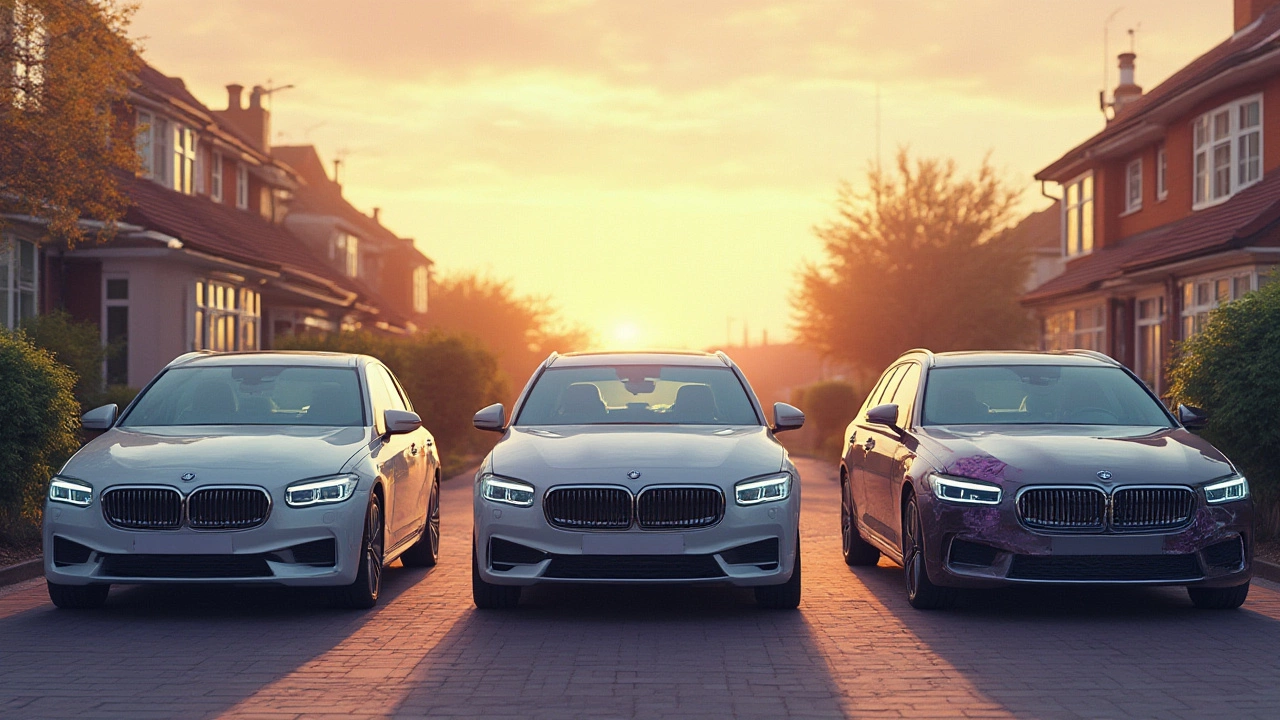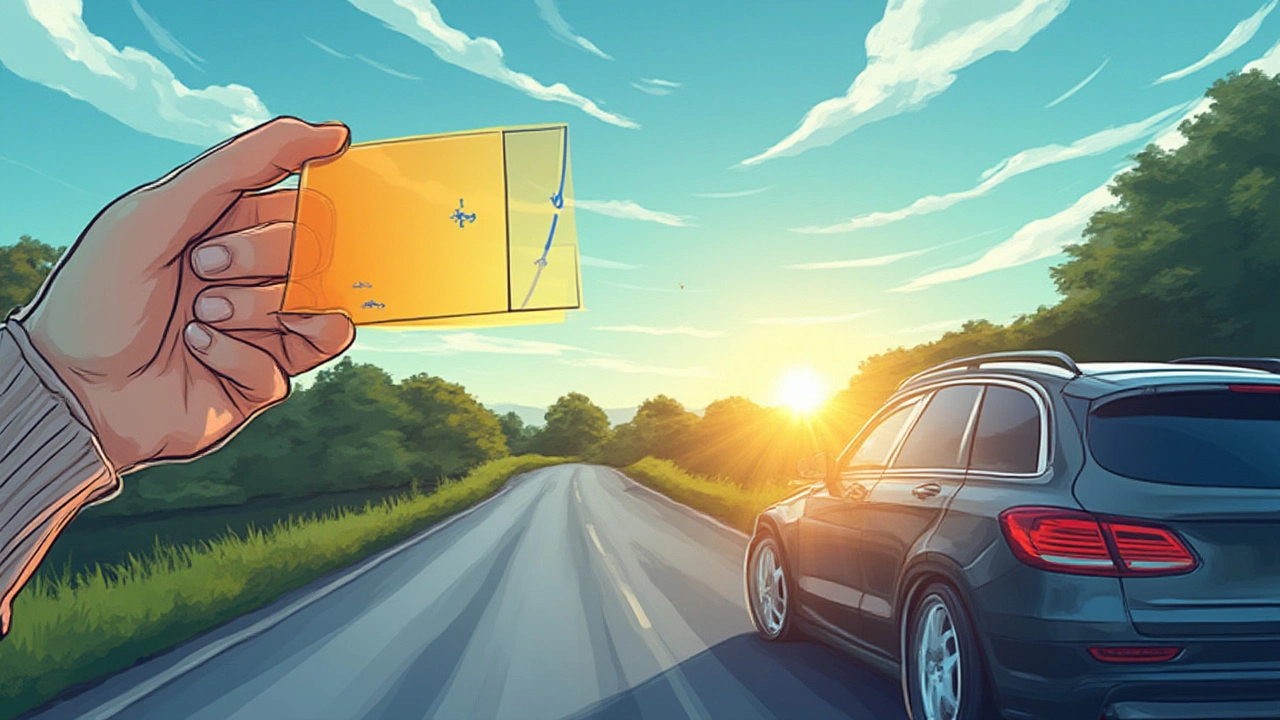Step outside in Adelaide on a summer afternoon and feel the full force of the sun. It’s relentless. Now imagine what your car window tint goes through every single day—baking in those rays, soaking up all that UV, and still keeping your car cool and private. But here’s the kicker: does window tint actually fade in the sun, or is that just another myth? Let’s get into it, because there’s a lot you probably don’t know about how tints age, why some get patchy or purple, and what you can actually do about it before your ride starts looking tired around the edges.
What Makes Window Tint Fade?
Window tint might look tough, but its color and strength depend on the materials it’s made from. There are three big types: dyed film, metalized film, and ceramic film. Most of the fading happens with the cheapest kind—dyed tint. Here’s how it works: manufacturers add colored dye into a polyester layer, which gives the glass that familiar dark look. But dyes don’t like the Australian sun. Harsh UV rays break down dye molecules, bleaching the tint and even making it look patchy over time. You’ve probably seen cars with weirdly purple, brown, or hazy windows—the old, faded dye literally changes color as it degrades.
Metalized and ceramic tints tell a different story. Instead of dyes, metalized films use tiny bits of metal or alloys layered into the material, so the color and effectiveness last longer. Ceramic tints swap out the metals for advanced ceramics, which handles UV and heat way better than anything else on the market. Those tints hold their color and clarity far longer, though they cost a chunk more upfront.
Even with the best tint technology, nothing is totally fade-proof. UV rays, infrared heat, humidity, and even cleaning solutions can nibble away at the tint’s structure. According to expert data, a cheap dyed film can start looking rough after just two summers in full sun, while a high-end ceramic tint might go five to ten years before any real loss of color. Your neighborhood, parking habits, and even whether you always leave your car facing the same direction can all make a difference.
How Does Sunlight Affect Different Tint Types?
The science is pretty clear: UV rays and heat are public enemy number one. It’s not just about color fading—sun also warps adhesive layers. As the adhesive lets go, you get bubbling, hazing, or even cracks in the film. Pure dyed tints are the most vulnerable. They absorb the sun’s rays so the cabin stays cooler, but those same rays chew up the dye. In South Australia, where days can climb above 35°C, that punishment adds up fast.
Metalized tints throw up a bigger wall against the sun. The tiny metal flakes actually bounce a good chunk of sunlight away. They might get a bit shiny with age, but they hold their tint color a lot longer—and you won’t see them turning purple. The downside? Some metalized films can interfere with phone or radio signals, which can be an irritating trade-off these days.
Ceramic films are the new favourite. Instead of dyes or metals, they use nano-ceramic particles that block and absorb solar energy without interfering with signals or even making the glass dark. Ceramic tint can cut UV by 99% and reduce infrared heat by up to 80%. Real-world testing shows that after five years of tough sun exposure, high-quality ceramic films lose less than 5% of their tint strength. That’s a longer life than most people keep their cars.
Here’s a snapshot from lab tests and real Aussie sun exposure:
| Tint Type | Typical Fade Time (Years) | UV Blocking (%) | Notes |
|---|---|---|---|
| Dyed Film | 1-3 | Block 60-95% | Cheapest, fades and discolors quickly |
| Metalized Film | 3-7 | Block 75-99% | Reflects heat, possible signal interference |
| Ceramic Film | 5-10+ | Block 99% | Top performance, keeps color longest |

What Are the First Signs of Tint Fading?
You might not notice it happening—fading creeps up slowly. At first, you’ll spot the color losing its richness. Dyed films shift from a deep charcoal to a lighter gray or take on a brownish or purplish hue. This is literally the chemical structure breaking down in the sun. Next up: patches and streaks. If the adhesive starts giving up, you’ll see blurry sections or odd textures. Bubbling is another dead giveaway. Trapped air forms blisters under the film, usually starting near the bottom of the window where more sunlight and heat soak in when the doors are closed.
Another sneaky sign? Reduced privacy or interior glare. If you notice it’s suddenly easier to see inside your car or if you squint more when driving at certain angles, the tint layers are probably thinning. The sun also dries out the edges, making it easier for dust or even car wash soap to get underneath, speeding up the decay. If you run your finger over the glass and feel a rough or flaky edge, that’s a sure sign the tint’s days are numbered.
Not all fading means disaster, though. High-end tints fade consistently, so you won’t get those ugly blotches or purple streaks. Instead, they become fractionally lighter over many years—almost like gently worn denim. But once the integrity of the film or glue is compromised, replacement is the only real fix. Nobody wants to be the bloke driving with stippled, patchwork windows.
Can You Prevent Tint Fading?
You can’t pause the Australian sun, but you can slow it down. First tip: always choose the best tint you can afford. Paying a bit more up front for ceramic or pro-level metalized films saves you heaps of hassle and replacement cost later. Beyond that, simple stuff helps—they still matter even with the flashiest tint.
- Park smart: Shady spots, garages, or even angled parking (so the same window isn’t always in direct sun) can give your tint a breather.
- Use a proper sunshade: They’re cheap, look a bit daggy, but block the windshield and keep cabin temps down. That’s less strain on your tint glue.
- Stick to mild cleaners: Harsh chemicals, ammonia-based sprays, and even a rough towel can wear down the top layer of tint. A soft cloth and a gentle, diluted detergent does the trick.
- Keep rolling up the windows all the way: Some drivers leave windows cracked in hot weather, but sunlight pouring in through a gap can bake one edge of the film faster.
- Regular checks: Run a hand over the glass every few months and look for sticky patches, blisters, or light leaks—catching issues early lets you fix edges or seal small bubbles before things get ugly.
One thing that surprised me: window tints fade faster on the driver’s side than the passenger’s. Blame the combo of stronger local sun angle and the way most of us park. Here in Adelaide, north-facing cars get extra UV, so swapping up your parking direction every now and then makes a difference. Also, for those who love their pets (my goldfish Flash included), it’s a win-win—less heat inside means happier, safer animals if you ever have to leave them in the car (though never for long, of course!).

When Should You Replace Faded Tint?
If your tint has hit that sad, see-through stage or looks like it’s been in the wars, replacement beats endless patch-ups. Here’s how you know it’s time: if sections are peeling away, if the color change is obvious in daylight, or if you’re losing night visibility because the film is hazy or streaked. Once adhesive starts to fail, repairs won’t hold. Leaving it too long won’t just look shabby—it might even lead to legal headaches. South Australian vehicle laws set minimum visible light transmission (VLT) levels for tint. If your faded film lets too much light in or makes it too hard to see out, you risk a fine or a failed inspection.
Swapping out old tint is tricky but possible for DIYers with patience, a heat gun, and some time. Most people get the pros in, because removing stubborn glue or avoiding scratches is fiddly work. The new breed of films go on cleaner, last longer, and use adhesives that actually get stronger as they age. Plus, many include lifetime warranties against noticeable fading.
Think of new tint as more than cosmetic—it’s protection. Your dash and seats stay darker, your A/C doesn’t have to work so hard, and even your goldfish (if they’re ever tagging along, like Flash on road trips) skip boiling in the sun. And let’s be real: nobody wants to ride in a car with sad, blotchy windows. A fresh tint job resets the clock and keeps your car feeling sharp, private, and oh-so-summery, no matter how rough the sun gets out there.